- Home
- Jason Webster
Violencia Page 6
Violencia Read online
Page 6
‘The only important event which occurred during the Visigothic era was the adoption of the Christian religion as the religion of the State.’
Writing in 1942, Spanish diplomat and historian Salvador de Madariaga1 was harsh on the three-hundred-year period between the collapse of Roman rule in Hispania and the Moorish invasion of the eighth century. But he was not unfair. Other historians were even more damning; according to Ramón Menendez Pidal: ‘The Visigoths left nothing, not one stone, one book, one memory.’ The fact is that, beyond the establishment of Catholicism, there are really only a couple of other points to highlight from the Visigothic period of Spanish history. Both of them, however, are important: it marked the first systematic, State-sponsored persecution of the Jewish population; and second, it was the first time that the Peninsula became politically unified. Almost a thousand years later, these two developments would be mirrored during the reign of the Habsburgs, a dynasty, like the Visigoths, of Germanic origins.
The Visigoths were not the first ‘Barbarians’ to cross the Pyrenees in the wake of Rome’s disintegration. In the early fifth century whole tribes of Vandals, Alans and Suebi had descended on to the Spanish tablelands through the pass at Roncesvalles.2 The Vandals and Alans wandered around for a few years, formed short-lasting kingdoms in the face of weakened resistance by the Hispano–Roman inhabitants, before finally deciding that Spain was not for them: in 629 they jointly crossed the Strait of Gibraltar and headed for modern-day Tunisia, where they eventually settled. The Suebi, however, found Spain more agreeable, particularly the lush, wet, north-western areas, where they bedded in for the long term.
Meanwhile, fresh from sacking Rome itself in 410, the Visigoths passed into Spain at the eastern end of the Pyrenees, taking Barcelona in 415 (founded centuries before by Hannibal’s father, Barca). In time they would become masters of the whole Peninsula.
As de Madariaga’s comment suggests, the importance of the Visigothic period of Spanish history exists mostly on a symbolic level. Largely Romanised themselves by this point, the Germanic tribe brought little in the way of new culture to the Peninsula, ruling as a military elite distant from the local population. For centuries this division was established in law, with different legal codes applicable to either group. Linguistically, the Visigoths brought almost nothing, eventually dropping their own language in favour of the vulgar forms of Latin then developing in the Peninsula. (Interestingly, the handful of Spanish words of Visigothic origin almost all have military connotations, denoting where this Germanic people concentrated its energies; for example: hacha – ‘axe’, estribo – ‘stirrup’, and varón – ‘male’.) Even religiously, they abandoned their preference for the Arian interpretation of Christianity – which saw Christ as subordinate to God the Father rather than his equal – adopting, in 589, the Catholic line. And in three centuries they only founded three cities: Vitoria – today the administrative capital of the Basque Country; Olite, a small town in Navarre; and Recópolis, in Guadalajara province, which was later abandoned. When it comes to the legacy of the Visigoths in Spain, any statement has to be heavily qualified.
Let’s take, for example, their unification of the Peninsula under one rule. From their arrival in the early fifth century, various groups stood in the Visigoths’ way: the Vandals and Alans were quickly heading south towards North Africa, but the Suebi were entrenched in the north-west. Meanwhile along the northern coastal areas, groups such as the Basques were continuing a longstanding tradition – alive to this day – of giving new rulers an awkward reception. Finally, in the south and east, the Byzantines invaded and were creating the province of Spania, stretching from Lucentum (modern-day Alicante) all the way to the Algarve. It would take the Visigoths two hundred years – the same time that it took the Romans – to conquer and subdue all these enemies, finally becoming lords of the entire Peninsula in the early seventh century.
That they did so was close to a miracle given the near-permanent infighting among themselves. This was caused in large part by having an elective monarchy, which meant much energy was lost in civil wars. If the Visigoths were good at one thing, however, it was fighting. King Suinthila was the man who finally pushed out the last Byzantine forces and became the first monarch of all of Spain in the 620s – rex totius spaniae, in the words of a contemporary historian. Not that it did him much good: following a pattern typical of the Visigothic period, his rule was short-lived. In 631 he was ousted by a rival, excommunicated by the Church, and exiled.
But why isn’t he better known today? A very small street is named after him in a leafy suburb of Madrid. There’s also a statue of him . . . somewhere. The point is that today, as with the Romans and most other invaders, many Spaniards, again, view the Visigoths as outsiders.3 Admittedly this time with more justification: the Visigoths unified the country and established Catholicism as the State religion, but out of a total population at the time of around six or seven million people, this military elite of around two hundred thousand never became fully integrated with the local population. Perhaps it had something to do with their unpronounceable names: Chindasuinth? Recceswinth?
Nor were the Visigoths ever really in complete authority. Shortly before completing their conquest of the Peninsula, they passed laws against the Jews. These included banning them from marrying Christians, and ordering the execution of Jews who converted Christians to their own faith. In addition, forced conversions were carried out, and a large number of Jews left Spain as a result, heading for France.
Yet despite their draconian nature, and the furore that surrounded their initial passing, these laws were not fully implemented, and many local authorities turned a blind eye to them. Such a state of affairs was even expected by the king who introduced them, Sisebut, who placed a curse on his successors if they failed to impose his anti-Jewish measures. To a large degree, in fact, Visigothic kings were only in nominal control. The Church was an equal, even more powerful, authority during the period, which effectively held the country together.
The fact is that, unlike their descendants of the fifteenth and sixteenth centuries, the Jewish community of Visigothic Spain was able to survive thanks in large part to the instability of the governing elite. The Visigoths may have eventually managed to rule over the entire Peninsula, but infighting, civil wars and rebellions continued apace for the next hundred years, meaning that the Germanic kings had little time to devote to matters beyond their power struggles.
If anything, the importance of the Visigothic period for Spanish history lies less in what it was and more in the patterns which were laid down during the time: struggles to unify the country, persecution, and perpetual civil conflict. These play out time and again over the centuries to come.
1 De Madariaga was Spain’s ambassador to Washington and representative at the League of Nations in the 1930s.
2 This gateway near the western end of the mountain chain later became the setting for the Chanson de Roland – the twelfth-century cornerstone of Western literature – and remains the starting point for many embarking on the Camino de Santiago.
3 An exception to this is to be found among some right-wingers and Francoist diehards who cling to the Dictatorship’s attempted co-opting of the Visigoths as a heroic Spanish people of the past.
A SEVILLIAN SAINT
One individual stands out from the three hundred years of Visigothic Spain: Isidore of Seville, scholar, polymath, archbishop, saint and the last Father of the Church.
Sainthood was something of a family business for Isidore: his brothers Leander and Fulgentius, as well as sister Florentina, all managed to obtain the title as well. Probably born in Cartagena around 560 to a wealthy family, Isidore was educated in Seville, later becoming the city’s archbishop. He helped restructure and strengthen the Church, fighting off new heresies in the wake of the defeat of Arianism.
What Isidore is best known for, however, and the reason for his continued fame, is his writing of the Etymologiae.
Later, the idea of writing an
encyclopedia containing all world knowledge would become more widespread: the Ikhwan al-Safa – the ‘Brethren of Sincerity’ – undertook a similar exercise in tenth-century Baghdad, as did Roger Bacon in the thirteenth century with his Opus Maius. But Isidore was one of the earliest people in the post-Classical world to come up with the idea,1 a beacon of light aware, perhaps, that he was living in an age which later generations would qualify as ‘Dark’, and that therefore it was necessary to compile and summarise as much knowledge as he could before it was lost for ever.
Interestingly, he was not alone: Eastern Christians had had a similar idea. Around 600, Nestorian scholars in what is now southeastern Turkey were hailing the combined works of the scholar Theodore of Mopsuestia – leader of the School of Antioch who died in 428 – as the sum total of all knowledge. Whether Isidore was inspired by this is not known, but his work makes a tantalising fit to a common trend in Spanish history of picking up an intellectual or cultural baton from further east before passing it on to the rest of Western Europe.
And thank goodness he did, for large numbers of Classical texts are only known to us today thanks to their inclusion in Isidore’s magnum opus, which stretched to twenty volumes, and took some twenty-five years to write. Predictably, given the author’s Classical education, it contains material on the standard Trivium (grammar, logic and rhetoric) and Quadrivium (arithmetic, geometry, astronomy and music). Further volumes dealt with the law, the structure of Heaven and Hell and the hierarchies therein. But then Isidore started branching out, covering subjects as varied as the nature of oracles, agriculture, the different metals and stones and their qualities, the Animal Kingdom, roads and their construction, food, heretical beliefs, clothes and furniture. The work contained maps of the known world, as well as a whole volume on, not surprisingly given its title, etymology.
The Etymologiae – or Origenes as it’s sometimes called – was a hit. Published by Isidore’s disciples after his death in 636, copies quickly found their way over the Pyrenees to Christian communities hungry for the lost knowledge and wisdom to be found in its pages. Irish clerics in particular clung to it, naming it the Culmen, the summit of all learning. Isidore’s book was, in effect, all that any intellectually curious person would ever need, being a summation of everything held both in the Christian and Pagan scholarly traditions. All over Europe this Spanish-born work was used as a single reference – no other was required. The beacon which was lit in Seville spread its light throughout the Continent.
Centuries later, Dante was so impressed by Isidore that he honoured him and his work by placing him firmly in the sphere of the Sun next to Bede in his Paradiso. The eleventh-century Christian King Ferdinand of León so respected Isidore’s memory that he struck a deal with the then Muslim ruler of Seville to have the saint’s remains transferred to a basilica in the northern capital (these remains have been scattered since, with some now in Murcia and more in Almería . . .).
Isidore is one of the first of many Spaniards who, over the course of history, nurture and promote knowledge which subsequently goes on to illuminate the rest of the Western world. We shall come across several others in subsequent chapters, but for centuries, all the way through the Middle Ages and up to the Renaissance, the Etymologiae was a must-have tome for any self-respecting library in Europe, the first thing anyone would reach for when starting research on practically any subject. Does that sound familiar? Well, it will come as little surprise to hear that thanks to his efforts, St Isidore has been proposed as patron saint of the Internet. Spain – a Spaniard – in this instance was almost fifteen hundred years ahead of its time. At the time of writing, the Vatican is still pondering the matter . . .
1 Roman authors Marcus Terentius Varro and Pliny the Elder both wrote works considered encyclopedias several centuries before.
THE LAST GOTH
Visigothic Spain came to an end when the Moors invaded Hispania in 711, sweeping away the old order in about a decade and conquering the Peninsula for Islam. That much is fairly well known. What is less well known, however, is that by the early eighth century the Spanish kingdom which the Muslim warriors conquered was no longer unified: for a short period beforehand it had been divided in two.
Many theories try to explain how Visigothic Spain collapsed so quickly when it did. It may have been partly thanks to the persecuted Jewish population welcoming and assisting the Arab newcomers as fellow Semites. In addition there was a notable drop in morale around this time within the Visigothic armies. But this is a period where it’s hard to rely on the scarce historical sources that exist, not least because they were mostly written at best decades – and more usually centuries – after the events. What is clear, however, is that civil conflict among the Visigoths was a decisive factor in their defeat. True to a repeated pattern throughout its history, Spain, having been unified for a time, had broken apart. And it would take a new violent force to put it back together again.
Internal warfare had been a theme throughout the Visigothic period, and few kings made it to the throne without a palace coup at the very least along the way. But since the early 600s these conflicts hadn’t caused an actual rupture within the kingdom itself. Until some time around 710. What actually happened at this time is uncertain, but the key person is a man called Roderic, who appears to have taken the throne by force. Later legends talk of him actually grabbing the crown in the capital, Toledo, and placing it on his own head, an act which caused alarm among the Visigothic aristocracy.
Did Roderic assassinate King Wittiza to reach the top? Again, it’s unclear, but Roderic was not a popular man, for his coup led to a ‘tumult’. Visigothic Spain, quite suddenly, was divided.
That Roderic ruled from Toledo is confirmed by a handful of coins which have been recovered from the time, showing the correct dates and his name in Latin, Rodericus. However, coins from the same period show that there was now a new king in the north-east of the Peninsula, minting his own gold coins – a man called Achila. Even less is known about him than about Roderic, but the coins and their location indicate a kingdom at war with itself.
And civil conflict was breaking out just as a new, vibrant force in the shape of Muslim armies arrived from the Middle East and conquered North Africa, a mere eight miles away across the Strait of Gibraltar.
To be ‘the last king’ of somewhere is generally a guarantee that history will judge you harshly. Boabdil, the last king of Moorish Spain, was widely depicted as an effeminate fool after losing Granada to Ferdinand and Isabella in 1492. Although he has been cast in a more favourable light more recently by modern historians. His Visigothic counterpart, Roderic, eight hundred years earlier, may have been more manly, according to legend, but equally responsible for what happened to his realm owing to deep character flaws.
Two stories depict him as a hothead who flagrantly broke sacred taboos.
The first, later mentioned by both Christian and Moorish chroniclers, tells of a palace in Toledo, the House of Hercules, which had been sealed up for centuries. On his coronation, each Visigothic king would visit the palace and put a new lock on the door as part of a long-standing tradition. But when Roderic seized the crown, he charged over to the building and had the locks smashed. Inside, however, instead of great treasure, he found a simple box. Opening it, Roderic pulled out a piece of cloth with pictures painted on it, and writing, which said: ‘If this building is ever broken into, and this box opened, let it be known that the people whose pictures are drawn on this cloth will invade and conquer Spain.’ The king looked at the images and saw armies of men on horseback carrying great swords, with turbans on their heads. Men from the East. Frightened, Roderic closed the box and had the building sealed once more, but, of course, it was too late. The ‘genie’ was out of the bottle.
The second story recounts how Roderic took a fancy to the daughter of a man called Julian. Julian may have been the Visigothic governor of Ceuta – what to this day is still a Spanish exclave on the North African coast. Or he may have
been a wealthy merchant based in the same area. What the stories agree on, however, is that having laid eyes on Julian’s daughter (named as Cava in one source), Roderic tricked the family to come to the mainland, where he raped the girl. Horrified, Julian smuggled himself back to North Africa (leaving poor Cava behind . . .) in order to plot his revenge. And to do so he turned to the Muslim armies that had only recently arrived in the area. He struck a deal: he would help them cross the Strait, showing them the best sea routes and landing places, and in return they would exact revenge on Roderic for him. The Muslims, led by their governor Musa, agreed.
Freudian echoes between a ‘locked box’ and a maiden’s virginity apart, the two stories agree that Roderic’s downfall was due to his breaking a sacred bond or taboo. Perhaps it is just a storytelling technique, a way of tarnishing his name and making him responsible for subsequent events – a bad guy who got what was coming to him. Or perhaps what these stories refer to on one level is how Roderic had broken the unity of the Spanish kingdom, only a hundred years after it had finally and painstakingly been forged – something precious, delicate, and easily lost, as was about to be proven. That was his sin – and for that he would never be forgiven.
Whatever the case, Visigothic Spain was now doomed, about to be replaced by Moorish Al-Andalus. And Roderic himself would be dead, slain on the battlefield as his men – once proud Visigothic warriors, conquerors of Rome itself – were crushed by the Muslims.
PART TWO
ARABIAN SPAIN
VIEWS OF MOORISH HISTORY
The word ‘Moorish’ comes from the term mauri, which early Christian chroniclers used to describe the Muslim invaders who invaded the Peninsula in 711, drawing on the Latin name for western North Africa, Mauretania. The name is vague but has stuck, and is useful as an umbrella term for all the areas of Spain which were politically or culturally under Muslim control for the next nine hundred years. This is because all manner of peoples lived there during that time. Three religious groups dominated: Muslims, Christians and Jews (with a handful of animists surviving in isolated mountainous regions). Racially, however, there was even more of a mixed bag: indigenous Spaniards had a largely Iberian, Celtic and Semitic genetic make-up, as we’ve seen, but to this were now added new arrivals from all over the Islamic Empire, including Arabs, Berbers and Persians. In addition, slaves were imported from Sub-Saharan Africa and Slavic regions of Europe. When we include the long-established Jewish community on the Peninsula, the term ‘melting pot’ could well have been coined to describe medieval Spanish society. Which is why ‘Moorish’ is so useful a term: it encapsulates the crossroads nature of the Peninsula during this period.

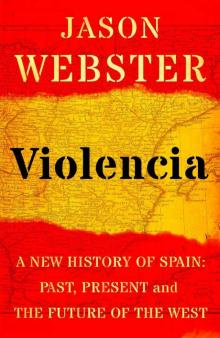 Violencia
Violencia Or the Bull Kills You
Or the Bull Kills You The Killing of El Niño Jesús
The Killing of El Niño Jesús The Spy with 29 Names
The Spy with 29 Names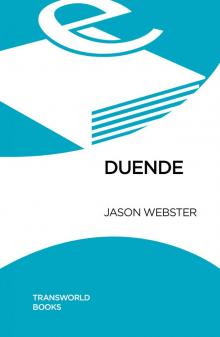 Duende
Duende Guerra
Guerra Sacred Sierra
Sacred Sierra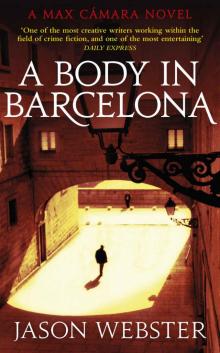 A Body in Barcelona: Max Cámara 5
A Body in Barcelona: Max Cámara 5 Fatal Sunset
Fatal Sunset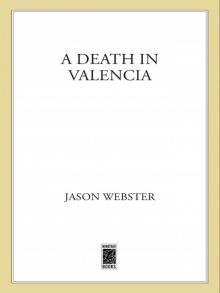 A Death in Valencia
A Death in Valencia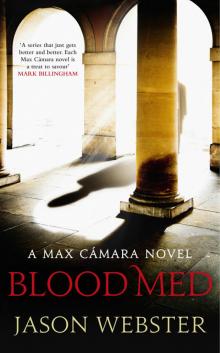 Blood Med
Blood Med Andalus
Andalus